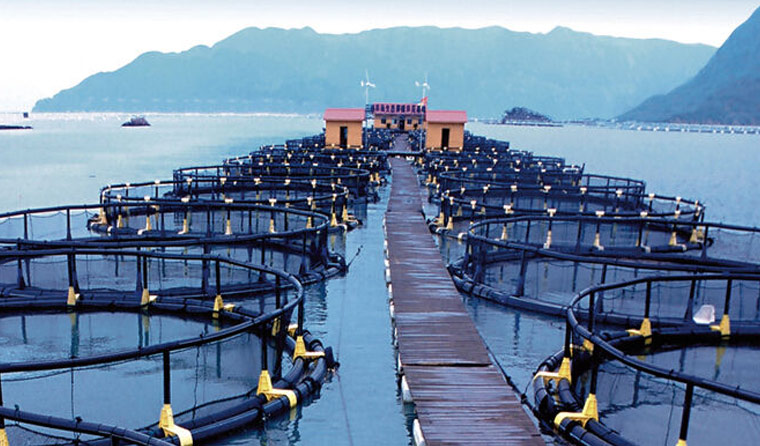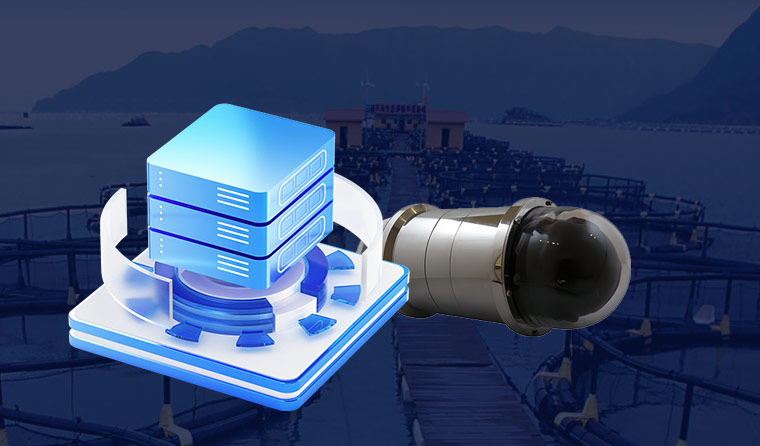How Much Storage Capacity Is Suitable for Underwater Aquaculture Cameras?
Hits: 432 Time: October 10,2025

Choosing the right storage capacity for an underwater aquaculture camera mainly depends on three key factors: recording requirements, storage cycle, and video specifications. There is no need to blindly pursue large capacity (to avoid resource waste) or choose insufficient capacity (to prevent loss of important monitoring data).
Videos of different clarity vary greatly in hourly storage consumption. The common video specifications and storage usage in aquaculture scenarios are as follows:
-
Standard Definition (720P): Occupies approximately 1-2GB of storage per hour, suitable for basic monitoring where only general fish activities (e.g., aggregation, abnormal surface floating) need to be observed.
-
High Definition (1080P): Occupies approximately 3-5GB of storage per hour, allowing clear observation of fish size and feeding status. It is the mainstream choice for most small and medium-sized aquaculture operations.
-
Ultra-High Definition (4K): Occupies approximately 8-12GB of storage per hour, suitable for scenarios requiring refined monitoring (e.g., fry growth status, early disease observation), but requires higher storage and device performance.
Storage needs vary greatly in aquaculture scenarios and should be determined based on actual usage:
-
Short-Term Temporary Storage (1-3 days): For daily inspections or temporary feeding observation. Calculated based on 8 hours of recording per day, 720P requires 3-6GB, 1080P requires 9-15GB, and 4K requires 24-36GB. A storage capacity of 32GB-64GB is sufficient.
-
Medium-Term Regular Storage (7-15 days): Used to record fish growth changes and trace feeding effects. 720P requires 7-30GB, 1080P requires 21-75GB, and 4K requires 56-180GB. A storage capacity of 64GB-256GB is recommended.
-
Long-Term Key Storage (30+ days): For compliance records in industrial aquaculture or full-process monitoring during high disease incidence periods. Relying solely on the device’s local storage is usually insufficient. It is recommended to combine local storage (64GB+) with external hard drives/cloud storage to avoid data overflow.

Most underwater aquaculture cameras support flexible recording modes, which can significantly save storage:
-
24/7 Continuous Recording: Consumes the most storage and requires calculation based on maximum needs (e.g., 72-120GB per day for 1080P). Suitable for uninterrupted monitoring of key areas (e.g., fry ponds).
-
Scheduled Recording (e.g., 6:00 AM to 6:00 PM daily): Records only during the required observation period, reducing storage consumption by half. Suitable for daily monitoring of ordinary aquaculture ponds.
-
Motion Detection Recording (triggered only when fish are active): Does not occupy storage during inactive periods, with the highest storage utilization. Suitable for monitoring fish aggregation (e.g., feeding areas) and can reduce storage needs by 30%-50% depending on activity frequency.
-
Requirements: Daily observation of feeding and fish activities, 7 days of data storage, mostly using 1080P resolution + scheduled recording.
-
Recommended Storage: 64GB-128GB, which can meet 7-day storage and leave some redundancy for emergencies (e.g., temporary extended recording).
-
Requirements: Refined monitoring of fry growth and water quality changes, 15-30 days of data storage, 4K resolution + motion detection in some areas.
-
Recommended Storage: 128GB-256GB of local storage, combined with an external hard drive (e.g., 1TB-2TB) to prevent data overwriting due to insufficient local storage.
-
Requirements: Only 1-3 days of data storage, mostly 720P/1080P resolution + motion detection.
-
Recommended Storage: 32GB-64GB, which is lightweight, low-cost, and sufficient for short-term use.
-
Do not blindly pursue "the larger the better": If only short-term storage is needed, choosing storage larger than 512GB will lead to idleness and increased costs. In addition, some low-end cameras may not support ultra-large capacity storage (e.g., only compatible with 128GB or below), so it is necessary to confirm the device’s storage compatibility in advance.
-
Do not ignore "data backup": Even if the storage is sufficient, it is recommended to back up important data regularly (e.g., export data to a computer/cloud weekly) to avoid data loss due to accidents such as device failure or water ingress, which may affect aquaculture traceability.
For more information about underwater aquaculture camera, please visit the homepage.

